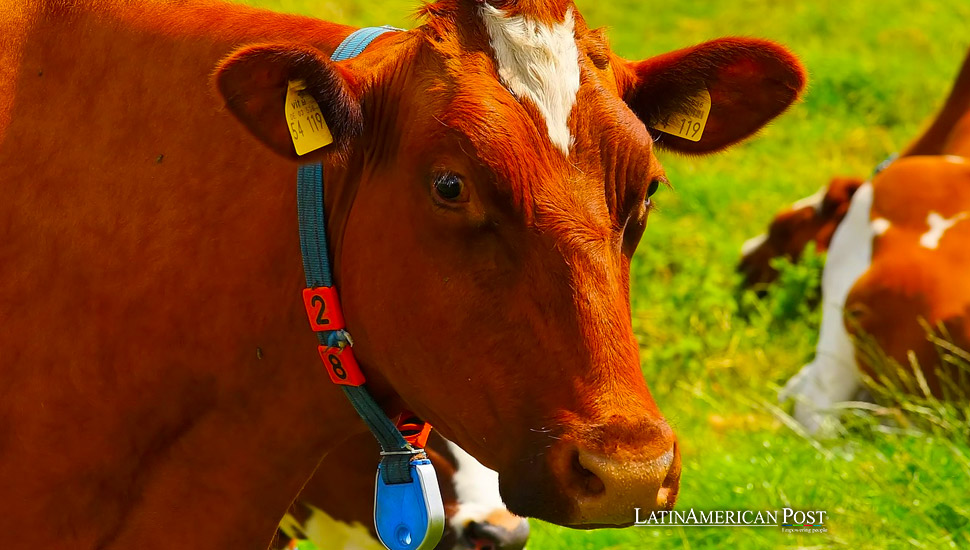China’s Growing Demand for Latin American Beef Impacts Trade Dynamics

According to a Boston University study, China’s increasing imports of beef from Latin America and the Caribbean have reshaped trade dynamics, displacing traditional commodities and raising environmental concerns.
In 2023, for the first time since China emerged as a significant trading partner for Latin American and Caribbean (LAC) nations, frozen beef ranked among the top five imports from the region into China, displacing refined copper. A recent economic bulletin from Boston University’s Global Development Policy Centre highlighted this significant shift. The study revealed that beef imports from Brazil, Argentina, and Uruguay to China had doubled in volume over the past five years and quintupled over the past decade. Currently, the region accounts for over three-quarters of China’s beef imports.
Last year, China imported 2.084 billion tonnes of frozen beef from LAC, with the majority coming from Brazil (1.18 billion tonnes), Argentina (524.7 million tonnes), and Uruguay (274 million tonnes). This marks a significant increase from about 256 million tonnes a decade ago, spurred by numerous trade agreements between Beijing and LAC countries. However, this import rise has sparked concerns about the potential environmental impact of China’s agricultural demands.
Shifting Trade Dynamics
Researchers at Boston University noted that beef’s rise to the fifth-largest import was partly due to the declining price of refined copper, which traditionally held this position. In 2022, copper production in Chile, the world’s largest metal producer, faced challenges due to more arduous mining conditions, lower ore grades, and water shortages. Although copper output has since rebounded, the temporary dip allowed beef imports to climb the ranks.
China’s imports from the region remain dominated by unprocessed transition minerals such as lithium carbonate, copper ores, and concentrates. Additionally, Beijing imports large volumes of soybeans, iron ore, concentrates, crude oil, and copper, mainly from Brazil, Chile, Peru, and Argentina. Strengthening relationships between LAC governments and China, evidenced by a record number of presidential visits to Beijing in recent years, has further bolstered trade. Last year alone, eight regional presidents visited China, emphasizing infrastructure, commodity exports, and renewable energy supply chains.
During the presidents of Brazil, Colombia, and Uruguay’s visits last year, key discussions centered on exporting beef and minerals, particularly transition metals, to China. The Boston University study highlighted that Chinese beef imports from LAC surged dramatically in 2018, following Beijing’s decision to raise tariffs on U.S. agricultural imports in retaliation for Washington’s tariffs on Chinese products. Additionally, the outbreak of African swine fever in China in 2018 increased demand for imported beef from LAC.
Environmental and Economic Impacts
Soybeans remain China’s second-largest agricultural import from LAC countries, with Beijing purchasing 62 million tonnes last year, predominantly from Brazil. Soybeans are a vital food source for China’s large pig population. However, the rapid growth of soybean and beef exports has raised environmental concerns. The Boston University study pointed to deforestation risks associated with Brazil’s global beef exports, with China’s demand posing the most significant exposure among Brazil’s trading partners.
Rebecca Ray, a senior researcher at the Boston University Global Development Policy Centre and co-author of the China-LAC economic bulletin, emphasized that managing these environmental and social risks requires significant collaboration. The study noted that Chinese meat industries have adopted zero-deforestation commitments for Brazilian soy purchases. Jun Lyu, chairman of Chinese agricultural giant COFCO Corporation, called for expanding the Soy Moratorium—an industry agreement to end soy purchases from the Amazon biome—to include the Cerrado, Brazil’s surrounding tropical savannah.
Investment and Trade Evolution
The Boston University study also highlighted the growing significance of lithium exports from LAC to China, driven by the global demand for lithium-ion batteries. Although still trading at relatively low levels, lithium exports are increasing rapidly. Chinese lithium carbonate imports quintupled between 2020 and 2023 as China positions itself to dominate the electric vehicle and battery-making industries.
Significant Chinese investments in LAC’s lithium projects underscore this trend. For instance, Chengxin Lithium Group invested $823 million in Argentina’s SDSA lithium project, BYD invested $290 million in a lithium cathode factory in Chile, and Minerals and Metals Group (MMG) invested $350 million to expand its Las Bambas copper mine in Peru. Additionally, Chinese development finance institutions (DFIs) made $1.3 billion in new commitments in 2023, including loans from the China Development Bank to Brazil’s National Bank for Economic and Social Development (BNDES).
Rebecca Ray pointed out that as Chinese firms gain experience operating in LAC, they rely less on Chinese DFIs and opt for direct investments or infrastructure contracts. “It is unlikely that development finance will rebound to the record highs of its peak years, 2009-2015,” Ray said. However, she acknowledged the ongoing environmental and social risks associated with the South American beef and soy trade.
Strengthening Sino-LAC Relations
The deepening trade relationships between China and LAC countries highlight the strategic importance of this partnership. The record number of presidential visits to China underscores the mutual benefits and shared priorities. These visits have facilitated discussions on enhancing infrastructure, boosting commodity exports, and expanding renewable energy supply chains.
China’s agricultural demand, particularly for beef and soybeans, plays a crucial role in shaping these trade dynamics. However, as the Boston University study highlighted, balancing economic growth with environmental sustainability is essential. Adopting zero-deforestation commitments and collaborative efforts to manage deforestation risks are steps in the right direction.
As LAC countries continue to attract Chinese investments, the focus on sustainable practices becomes increasingly important. The rapid growth of lithium exports to China further emphasizes the need for responsible mining practices and environmental stewardship. The collaboration between Chinese firms and LAC governments can set a precedent for sustainable trade practices, benefiting both regions economically and environmentally.
Also read: Avian Flu Concerns in Intensive Farming: Latin America’s Biosecurity Challenges
China’s rising demand for Latin American beef and other commodities marks a significant shift in trade dynamics with substantial economic and environmental implications. The Boston University study underscores the importance of managing these changes responsibly, ensuring that increased trade and investment benefits do not come at the expense of environmental sustainability. Focusing on sustainable practices and collaborative efforts will be crucial in shaping a prosperous and environmentally responsible future as China and LAC nations continue to strengthen their economic ties.




